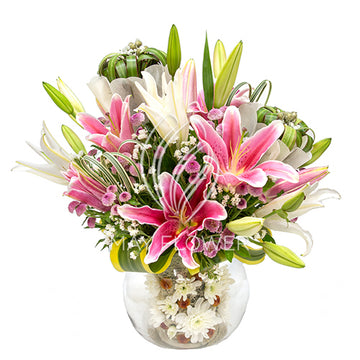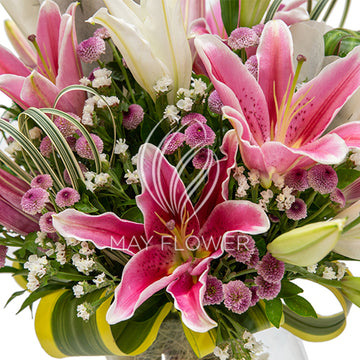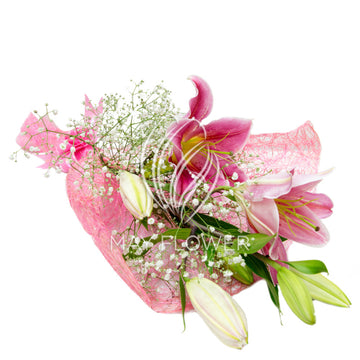Flowers that fight Cancer
Flowers that help in fighting cancer
Periwinkle
This pretty plant from Madagascar gives us two very important cancer-fighting medicines: vinblastine and vincristine. Vinblastine has helped increase the chance of surviving childhood leukaemia from 10% to 95%, while vincristine is used to treat Hodgkins’ Disease.
Traditional Madagascan healers used the rosy periwinkle for treating diabetes. This led to its study by western scientists who then discovered its anti-cancer properties.
These medicines have proved very profitable for global drug companies. Worldwide sales are worth over £75 million a year, but virtually none of this money finds its way back to Madagascar, one of the poorest countries in the world.
Some pharmaceutical companies are trying to redress this imbalance by working closely with ethno-botanists and indigenous healers, and sharing profits more equitably.
There are also recent international agreements which have tried to ensure that more profits from the commercial development of animal and plant species return to the countries of origin.
One such agreement is the Convention on Biological Diversity which seeks the ‘fair and equitable sharing of the benefits from the use of genetic resources’, together with the conservation of biological diversity and the sustainable use of its components
Essences are liquid solutions of the energetic imprint of flowers, plants, trees, crystals, or other natural sources. Essence therapists believe that they can help to increase mental, emotional and spiritual wellbeing. This may help people to feel better. The aim of using essences is not to prevent, control, or cure cancer or any other physical condition.
The most common and well known essences are the Bach Flower Remedies. In the 1920s and 30s a British doctor and bacteriologist called Edward Bach developed a set of 38 flower remedies. The flower remedies are highly diluted extracts from the flowers of wild plants. Bach believed that illness occurs when the mind and body aren’t in tune with each other. In other words, that our emotions strongly influence our health. He defined 38 emotional states that he felt made up the human condition. Each of the remedies was designed to help a person balance a specific mood or emotion. A combination of essences, called a rescue remedy, was created to use during emotionally difficult times.
Over the years, Bach’s theories have given rise to the creation of hundreds of new essences by producers all over the world. Essences are now produced from non flowering plants, crystals, gems and many other natural elements of nature.
Using essences
Essences are usually liquids in small dropper bottles and you drip them on to your tongue. You can also mix them with water and drink them.
Some types are also available as
Pills
Bath salts
Skin creams
Sprays
Why people with cancer use essences
Some people with cancer find that using essences can help them to feel better mentally, emotionally or spiritually. As a result, this may help some people to also feel better physically.
The aim of using essences is not to prevent, control, or cure cancer or any other physical condition.
Some people claim that flower remedies can help to boost your immune system. There is no scientific evidence to prove this. But many people report that flower remedies are helpful for reducing emotions such as fear, anxiety or depression.
Research into essences
There is very little research into how well essences work in helping people feel better but research seems to show that they are safe to use. Essences are never used to treat medical conditions.
A small number of foreign producers of essences have started to make claims that their products may have physical effects. But British laws don’t allow essence therapists to prescribe a treatment for or give advice on cancer. Therapists are also not allowed to use terms that may make the essences seem medicinal, such as ‘boosts the immune system’ or ‘helps you relax’.
Early studies into essences are not seen as reliable because they tended to look at using essences for medical conditions for which they are never used. Studies since 2007 seem to show that essences can help people to feel better and improve their quality of life. They also seem to show that the effect of the essences is not just due to the placebo effect. The placebo effect is a beneficial effect that can occur due to people’s expectation that a product will help them.
What using essences involves
You can buy and use essences yourself without help from a qualified therapist. The remedies come mixed with a very small amount of alcohol. You can dilute them with water, in line with the instructions on the bottles. Or you can drop the liquid directly under your tongue without diluting them. The time taken for people to notice a benefit can vary and everyone’s response is unique. Some people may feel quick results while others may find that it takes some time.
Many people are familiar with Rescue Remedy, which is a combination of 5 flower essences. The best known brand is Nelsons. There are several other brands and names, including Five Flower Remedy by Healing Herbs and Emergency Essence by Sun Essence. People may use these to try to keep calm in stressful situations, for example, taking an exam or coping with a phobia.
An essential oil is a concentrated hydrophobic liquid. “Hydrophobic” just means what you already know from the old saying: Oil and water don’t mix.
Rose oil is extracted from rose petals, and the petals used come from a variety of different roses. The two types of roses most often used for rose oil production are the damask rose and the cabbage rose.
Most essential oils are created through the process of distillation, usually by steam. You’ll find them in perfumes, soaps, cosmetics, and sometimes in flavoring for foods or scents for cleaning products and incense.
If you’re wondering about the distillation process, it involves a great deal of work. That’s why rose oil doesn’t come cheap. In most cases, the flowers are harvested by hand early in the morning, before sunrise. The petals are distilled later the same day. Several pounds of rose petals are required to distill just one ounce of essential oil.
The distillation process itself usually involves large, copper stills filled with roses and water and heated between one and two hours. Anything that vaporizes is collected in a condensing apparatus and transferred to a flask. From there, different types of extracts are divided up from the total mixture.
Essential oil is not the only product of this process. By-products called rose absolutes are acquired using a process called supercritical carbon dioxide extraction (this is the type of rose oil most commonly found in perfumes).
There’s also an element of rose oil called hydrosol, which is the part of the distillate known as rosewater. It’s a cheaper by-product of the distillation process and is most commonly used in skin care and some food flavoring.
























